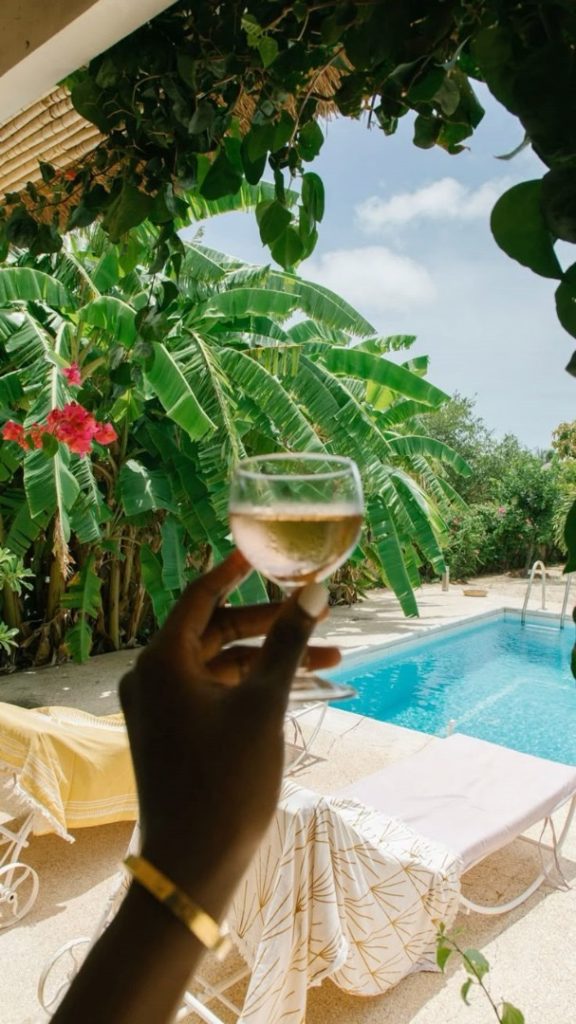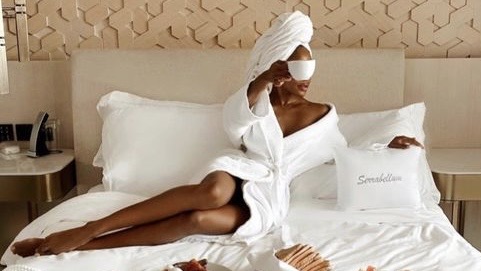‘Soft life’ is one of those buzzwords that has jumped out of captions and TikToks and into everyday conversation. It conjures images of satin robes, spa days, staycations, saying “no” to anything that looks remotely stressful, and a life soundtracked by Dami Oniru’s ‘Soft Life’ or Lady Donli’s ‘Cash’. For many young Nigerians, especially women, it started off as a form of resistance. A declaration that you deserve peace, pleasure, and ease after years of hustle culture and generational struggle.
But somewhere along the line, “soft life” stopped being a mindset and started looking a lot like a performance. And now, many of us are asking the same question: is this lifestyle even real? Or is it just another curated illusion we’re all chasing?
Scroll through Instagram or TikTok and you’ll be met with flawless visuals of brunch dates, airport lounges, and candlelit skincare routines. There’s nothing inherently wrong with any of that, but we rarely see the context. The cost. The stressful office job that paid for the trip. The pressure to keep up appearances. The emotional burnout lurking behind the clean aesthetics. Social media, by design, shows us the good bits: filtered, framed, and carefully timed highlights. But when everyone seems to be soft-living their best life, it becomes harder to tell what’s aspirational and what’s performative. And that’s where the problem starts.

The truth is: living soft isn’t cheap. The cost of living is rising, and the economic instability means even basic comfort is a luxury for many. For young Nigerians, the reality is that soft living, in the way it’s portrayed online, is often financially out of reach. Some people go into debt to keep up the illusion. Others struggle silently while trying to match the lifestyle they think they should have. The pressure to “look like you’re living soft” can become just another form of hustle, one where image matters more than actual rest or wellness.
Even for those who can afford the version of soft life we see online, it’s rarely as carefree as it looks. There’s still emotional labour involved: managing relationships, working demanding jobs, handling family expectations, or navigating personal struggles. But because soft life is often framed as the absence of stress, there’s little room to acknowledge the hard stuff behind the scenes. This creates a false binary: either you’re hard-living and miserable, or you’re soft-living and unbothered. In reality, most of us are just trying to find breathing space in the middle.
There was a time when “soft life” was about choosing rest and rejecting unnecessary suffering. But as the aesthetic caught on, it slowly became a symbol of status rather than self-care. Suddenly, it wasn’t enough to sleep in on Sundays — you needed satin bedsheets, imported candles, and a curated “morning routine” video to prove it. This shift has placed new pressures on people, especially women, to perform softness by looking unbothered, poised, and perfectly content, even when life is anything but soft. It’s ironic: in trying to escape the hustle, many of us are now working overtime to maintain the image of ease.
Maybe the problem isn’t the idea of soft life, but the way we’ve boxed it into one aesthetic. Because if we take a step back, softness doesn’t have to mean luxury. It can mean allowing yourself to rest without guilt. Choosing joy where you can. Finding ease in your day, even if it’s just listening to your favourite album while washing dishes.
Soft life should be a spectrum, not a destination. Not everyone will live in a high-rise apartment or travel to Zanzibar every year — and that’s okay. Real softness is about prioritising peace, wellness, and balance, not perfection. Sometimes, it’s not ‘Cash’ or ‘Soft Life’, but more like Ayra Starr’s ‘Bloody Samaritan’: protecting your space from bad energy; or Tems’ ‘Free Mind’: seeking inner peace.
So, is soft life a mirage? If you’re chasing it purely as an aesthetic, maybe. But if you see it as a mindset — a personal commitment to ease, joy, and boundaries — then no, it’s not a fantasy. It’s a quiet rebellion against a world that constantly demands more from us. And that kind of softness? That’s very real.




